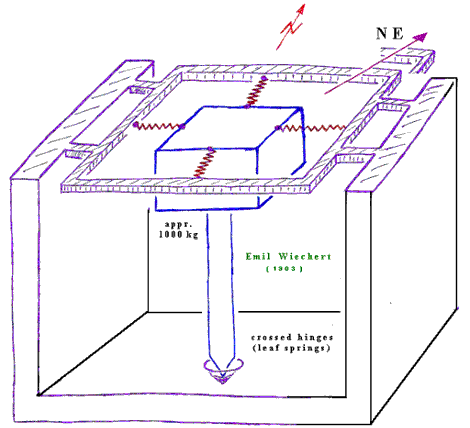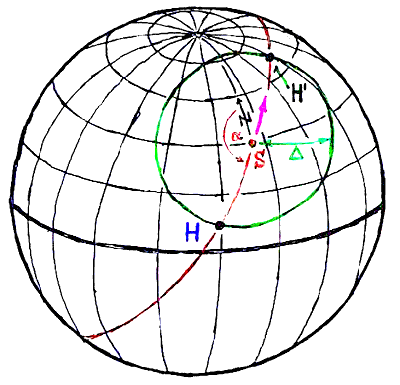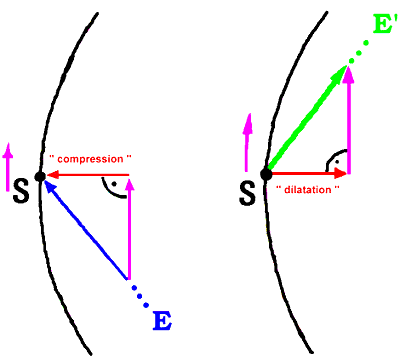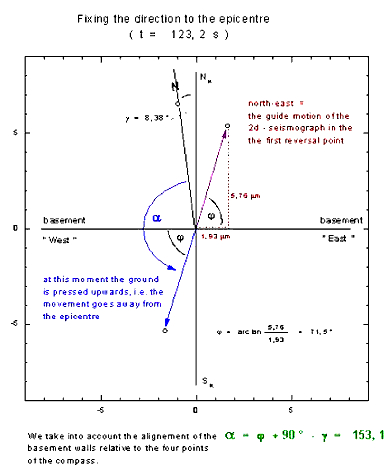6.3 Geographical epicentre-coordinates (localisation by one seismographic station) [ cont'd (c) ] 4/5
Obviously the bottom of the casing and the frame of the seismometer (being fixed to bottom) moved to the North-East at the arrival of the P-wave.
At this moment of evaluation there are still two points H or rather H' on the globe where the epicentre of the earthquake could lie: angle α defines the great circle through station and epicentre; distance Δ defines a circle round the station having a radius of 6100 km. The two circles have merely got two points of intersection (Fig. 7a). - We must now determine which of the two points represents the epicentre.
However, this can easily be decided with the help of the third seismograph, the vertical seismograph, which is activated by up and down deflections by the waves of the earthquake.
If we make a cut along the great circle through H, S and H' (Fig. 57b) the movement of the apparatus from S towards H' can only have been caused by two facts: either the P-wave hit S as an compression-wave from H to S or at the station first of all arrived a dilatation-wave moving from S to H'. In the first case the ground must have moved upwards, in the second case downwards. So if the UD-seismograph signals "up" the epicentre is in the point H; if the Z-seismograph first of all shows a downward movement then the epicentre lies in H'. In our case there was an upward movement ("compression") at the beginning, so the epicentre lies in H in the South-West.
Instead of using a direct reading of the average guide motion of the "2d-seismograph" - as shown in Fig. 55 - the determination of the direction gets easier, if one only considers the deviation of the ground in the reversal point of the horizontal movement.
Bei der endgültigen Bestimmung des Richtungswinkels α mit der Nordrichtung ist noch zu beachten, dass die Nordachse des Schulgebäudes um den Winkel γ von der tatsächlichen Nordrichtung abweicht. When definitely fixing the angle α between the direction to the focus and the north direction, we still have to consider that the "north axis NK of the school building" deviates by the angle γ from the actual north direction: to the axis NK the pendulum arms of the horizontal seismographs are positioned parallel (EW-seismograph) and respectively perpendicular (NS-seismograph).



